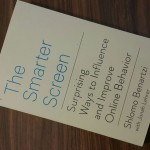A short glance at the cover of the hooked book would convince you to open it and read it. Eric Ries author of The Lean Startup, calls it a must-read and Matt Mullenweg founder of WordPress describes it as the roadmap of the company which is going to replace you somewhen in future.
 Your overall impression of the book would heavily depend on your background on behavioral psychology.
Your overall impression of the book would heavily depend on your background on behavioral psychology.
For ones who are not familiar with the reinforcement concept and the whole body of knowledge shaped around operant conditioning, the book would look like a wonderful fact book revealing the science behind most of the modern habit-forming products and services.
For ones who are familiar with the psychology behind slot machines and the huge old yet evolving gambling industry, the book would be a case-study collection of the implications of the same science in the world of webs and the age of technology.
The hooked framework is developed as a four-stage model shaping an addictive loop:
You need to have an internal or external mental trigger which reminds you to your customer and motivates her to make an action. But – as the core idea of the book – not every action should lead to a predetermined and predictable reward. The whole idea behind the addictive behavior, according to Nir Eyal, lies in its unpredictability.
If your variable reward leads to some investment, then the loop is complete and your customer or user will be more responsive to the next triggers.
Eyal adds another component called commitment to his model which in my opinion it’s just kind of morality flavor for the soup of the book to make kind of distinction between manipulative and productive addiction.
If you consider the variable reward as the central idea of the book, you may not be persuaded with the whole models and examples, as many critics have noted that there are many addictive online tools and services with the fixed and predictable rewards. But if you consider the book as an inspirational reading material for someone who seeks user engagement, I believe that you will be happy with it.
At least, the book provides a new frame of thinking about the digital world. A frame in which every photo posted on Instagram or every tweet tweeted on the tweeter is considered as a
A frame in which every photo posted on Instagram or every tweet tweeted on the tweeter is considered as a user investment in a product instead of user-generated content.
So the book would be a helpful reference for anyone who is trying to reach to a deeper understanding of the online consumer behavior.






